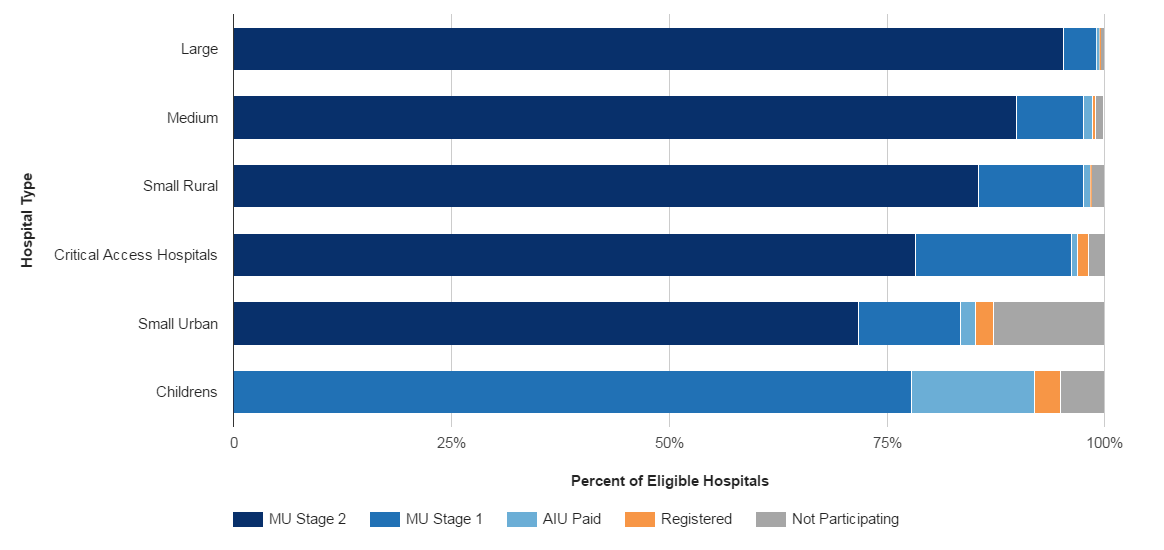
This figure was published in the March, 2013 ONC Data Brief, <br/>.
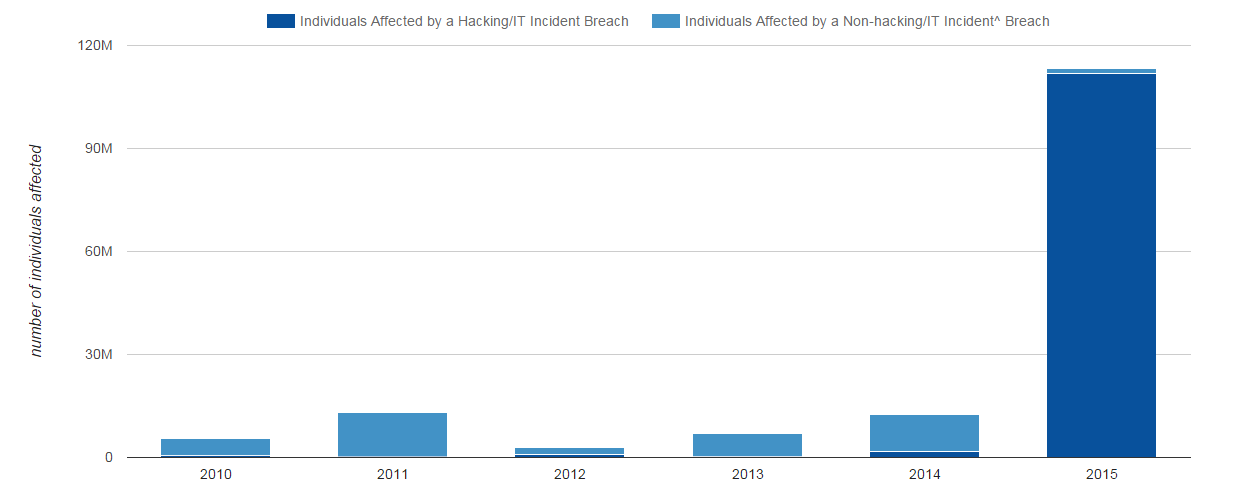
Based upon data collected by the HHS Office for Civil Rights, as of February 1, 2016, protected health information breaches affected over 113 million individuals in 2015. In 2015, hacking incidents comprised nearly 99% of all individuals affected by…
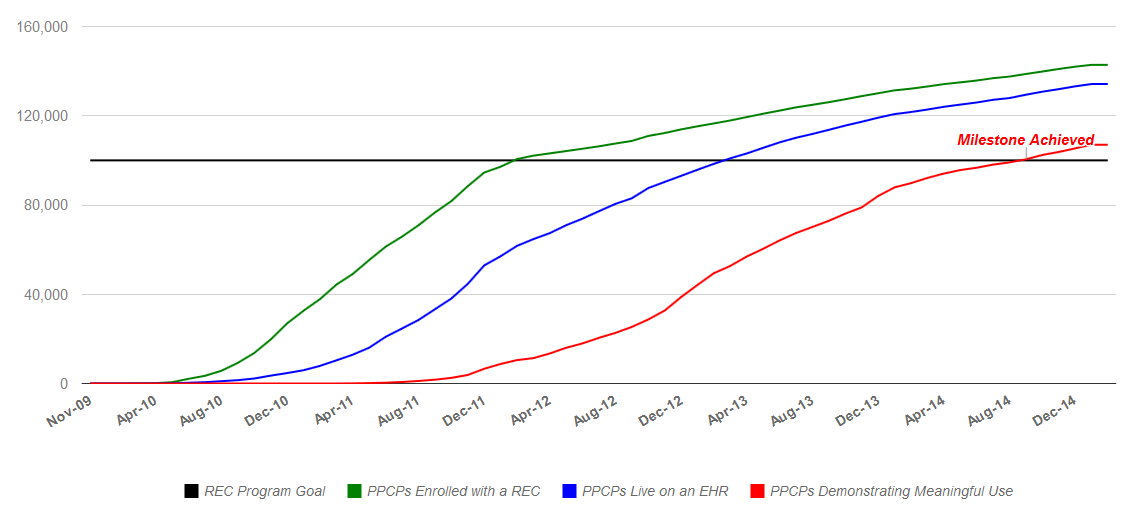
As of January 2016, the REC program has exceeded its target to enroll and assist 100,000 priority primary care providers (PPCPs) to demonstrate meaningful use (MU) of certified EHR technology (CEHRT). RECs support providers' adoption of CEHRT and…
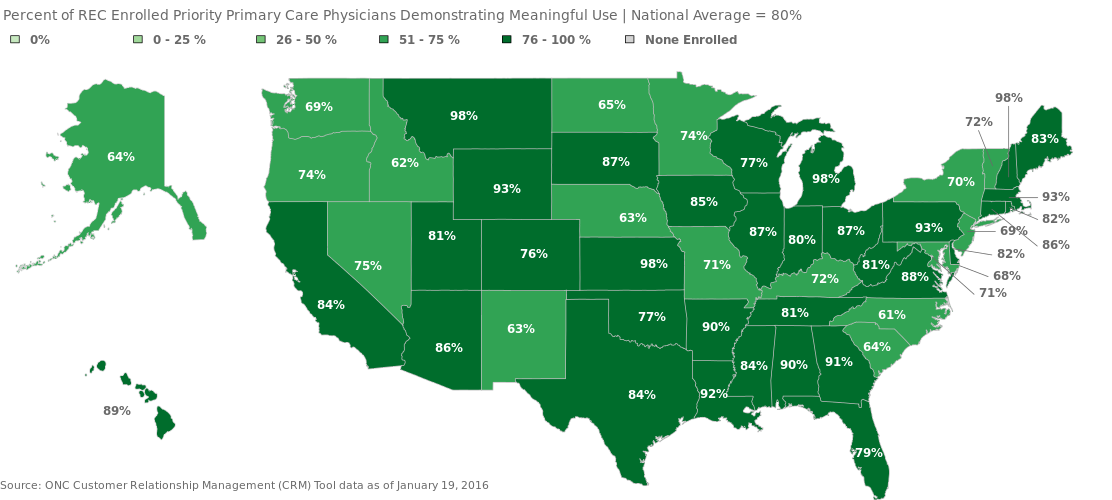
As of January 2016, over 8 in 10 of all REC enrolled Priority Primary Care Providers (PPCPs) are demonstrating meaningful use (MU) of certified EHR technology (CEHRT).
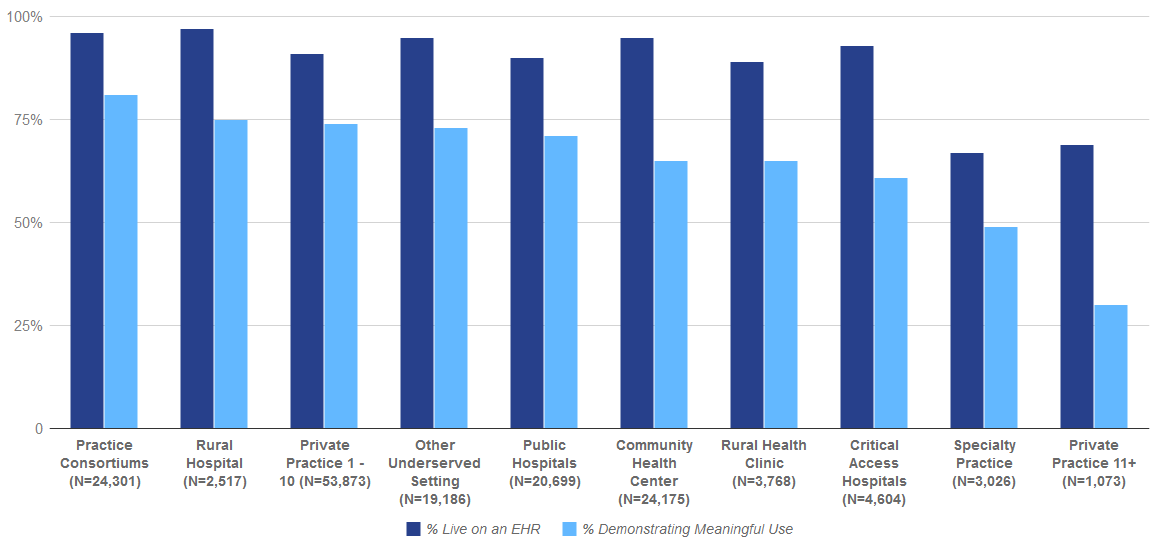
Over 90 percent of Regional Extension Center (REC) enrolled providers are live on an EHR, with three-quarters of enrolled providers demonstrating meaningful use (MU) of certified EHR technology (CEHRT).

Over 90 percent of all REC enrolled primary care providers are live on an EHR, with three-quarters demonstrating meaningful use (MU) of certified EHR technology (CEHRT). The majority of REC enrolled primary care providers are medical doctors or doctors…

As of January 2016, 87 percent of REC enrolled Critical Access/Rural Hospitals (CAH/RH) are demonstrating meaningful use (MU) of certified EHR technology (CEHRT).
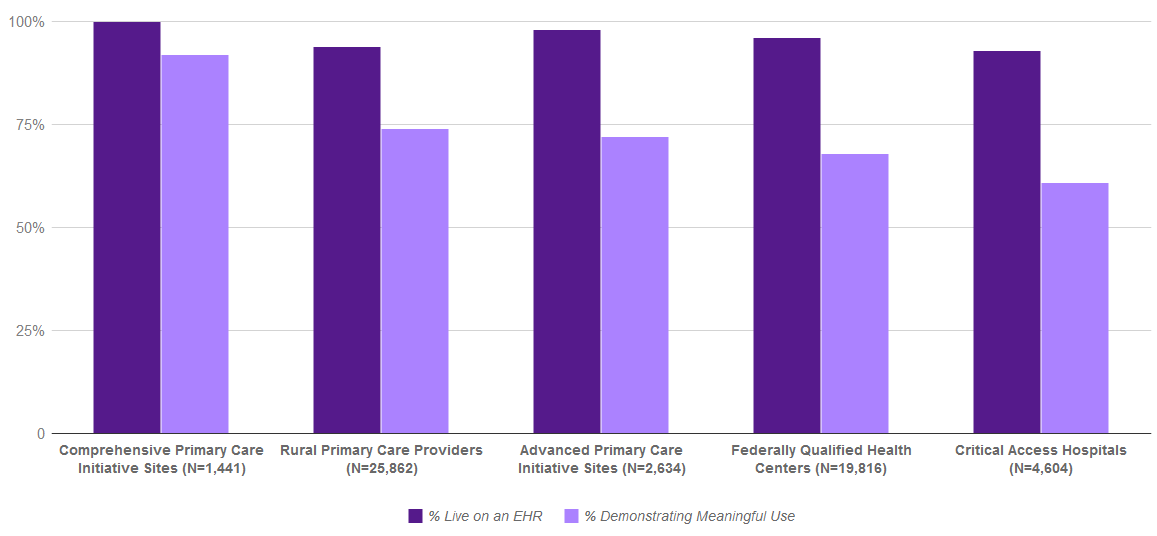
Regional Extension Centers (RECs) are working with over 80 percent of Critical Access Hospitals (CAHs) nationwide as well as supporting practices participating in additional delivery system reform and payment models. RECs are supporting over 80 percent…
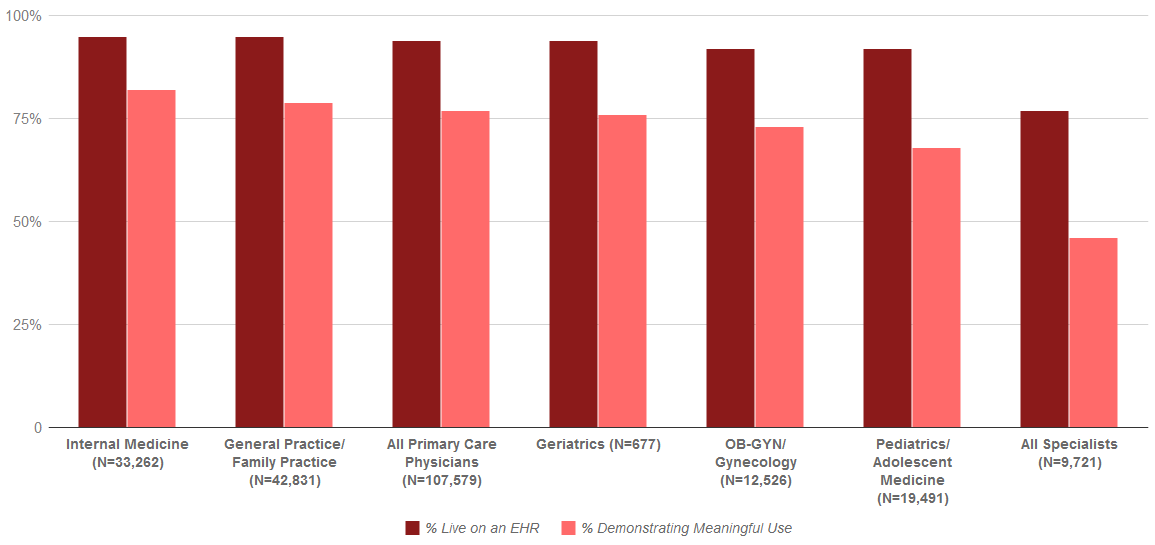
Over 90 percent of REC enrolled physicians are live on an EHR, and over 75 percent have demonstrated meaningful use (MU) of certified EHR technology (CEHRT). General Practice/Family Practice and Internal Medicine physicians comprise over 70 percent of…
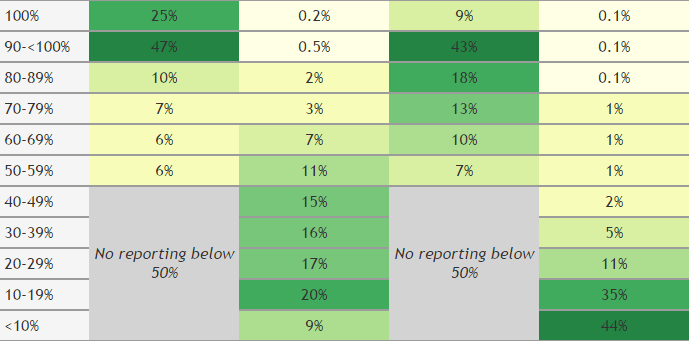
The data presented here reflect eligible hospital, Critical Access hospital, and eligible professional reporting on electronic exchange measures as defined for 2014, and indicate that significant progress must be made to reach a patient-centered, fully…
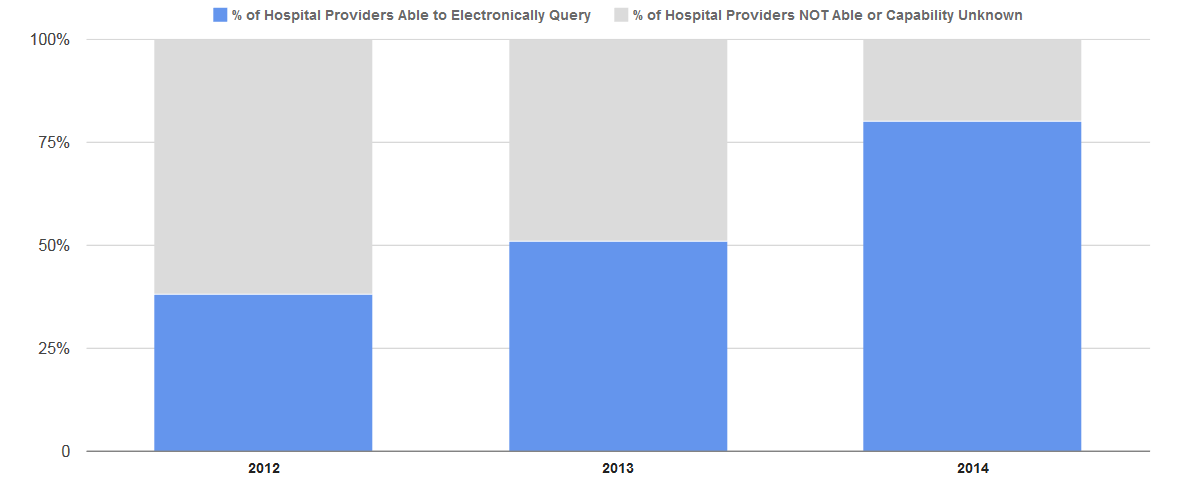
As of 2014, 80 percent of non-federal acute care hospitals have the capability to electronically query patient health information from external sources, an over 30 percentage point increase from 2013. In 2014, 48 percent of hospitals routinely queried…
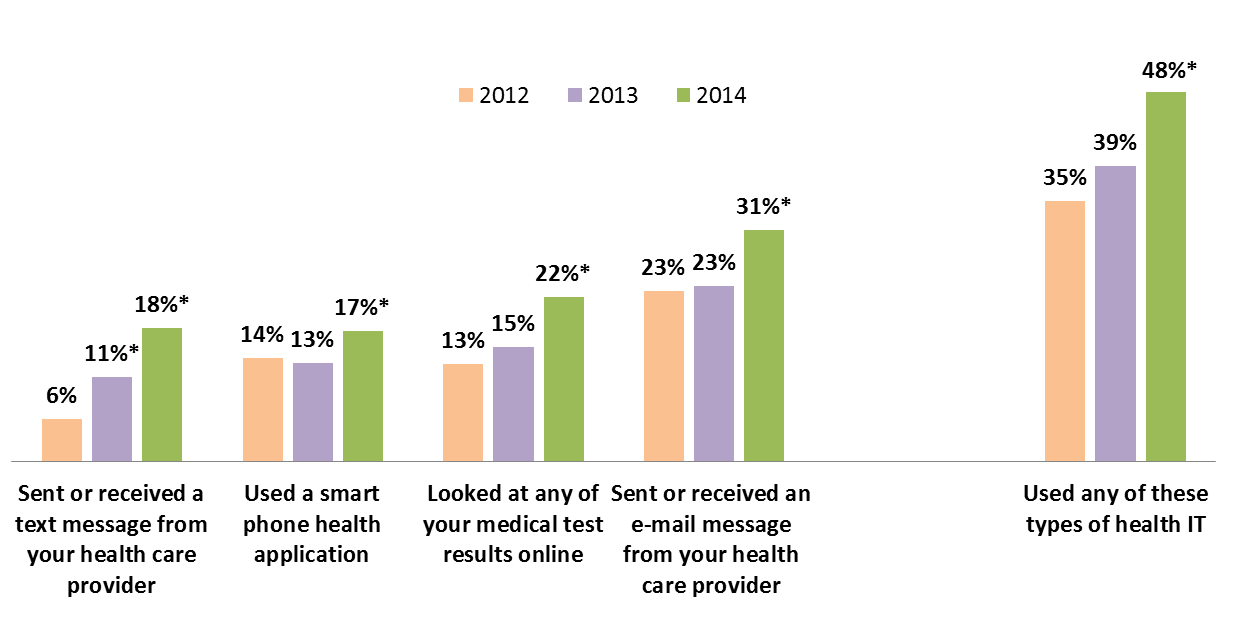
Individuals use of certain types of information technology to interact with their health care provider, view their personal health information, and track their health and wellness grew significantly between 2013 and 2014. The percent of individuals who…
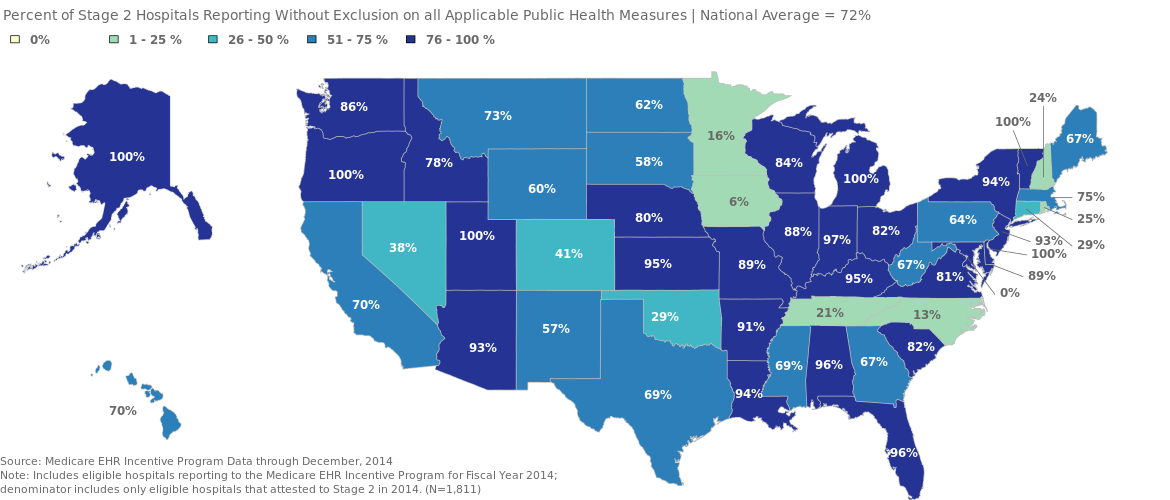
The CMS EHR Incentive Program provides incentive payments for eligible hospitals to adopt and meaningfully use certified health IT. Among the requirements to receive an incentive payment, participating hospitals must report on public health measures.…
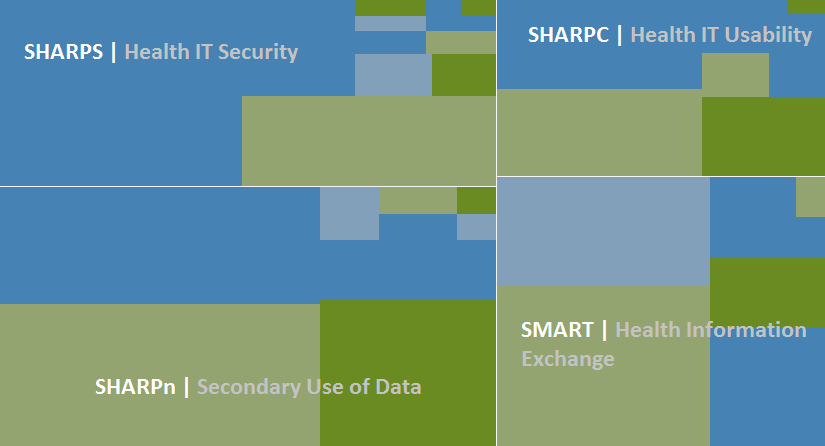
The Office of the National Coordinator for Health IT established the SHARP program to support innovative research and to address well-documented problems that impede the adoption and use of health IT. The SHARP program covers four subject areas:
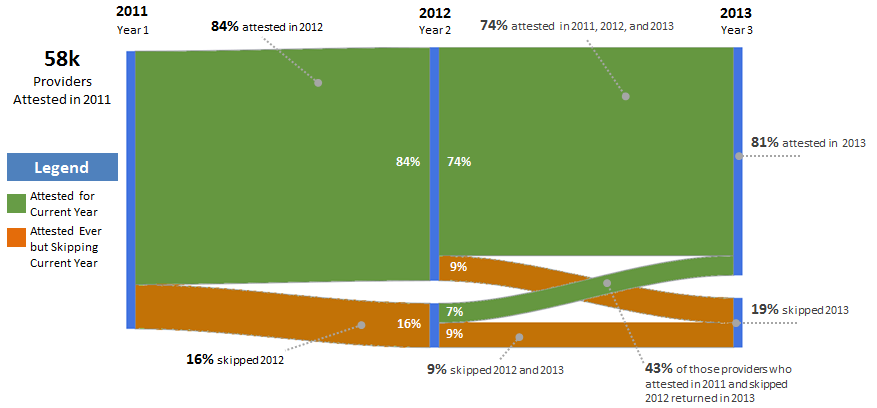
Approximately 58k health care professionals attested to meaningful use of a certified EHR in 2011 through the Medicare EHR Incentive program. As of May 2014, 9 in 10 providers who attested to Meaningful Use in 2011 attested again in a following year. Of…
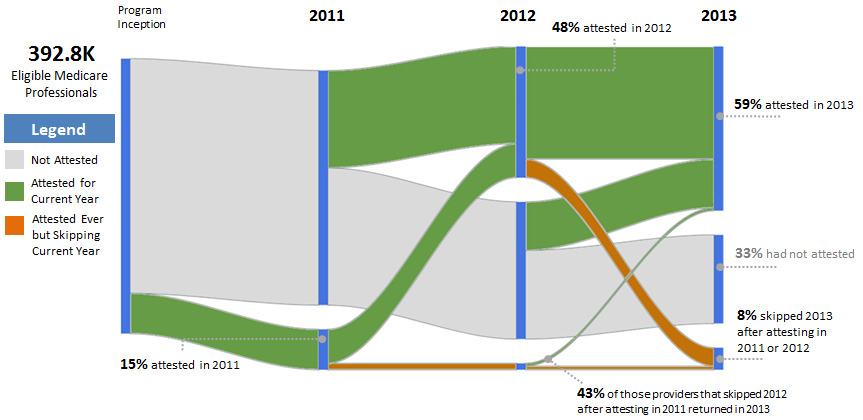
There are 392,800 providers eligible for the Medicare EHR Incentive Program. As of May 2014, approximately 67% had attested to meaningful use of a certified EHR through Medicare. Half of the Medicare-eligible providers attested in 2011 or 2012, and the…
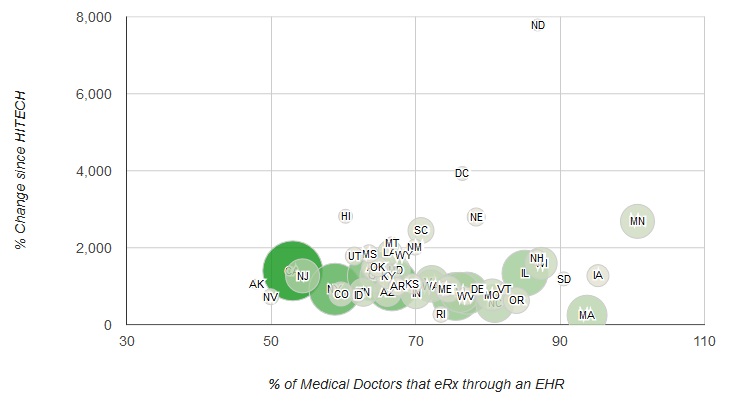
In December 2008, less than two months before the passage of the Health Information Technology for Economic and Clinical Health (HITECH) Act, fewer than 7% of all U.S. medical doctors electronically prescribed (e-prescribe) patient medications through an…
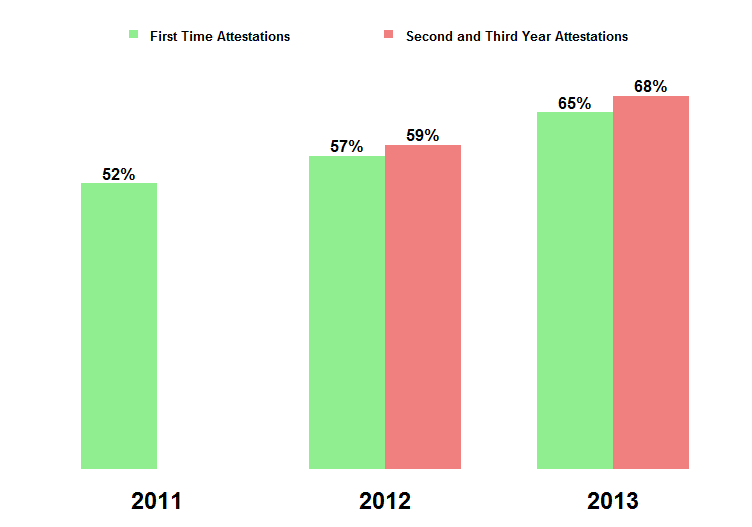
Approximately 7 out of 10 primary care physicians eligible for the Medicare EHR Incentive Program selected the Immunization Meaningful Use Menu measure without exclusion in 2013. 65 percent of 2013 first time attesters selected this measure without…

